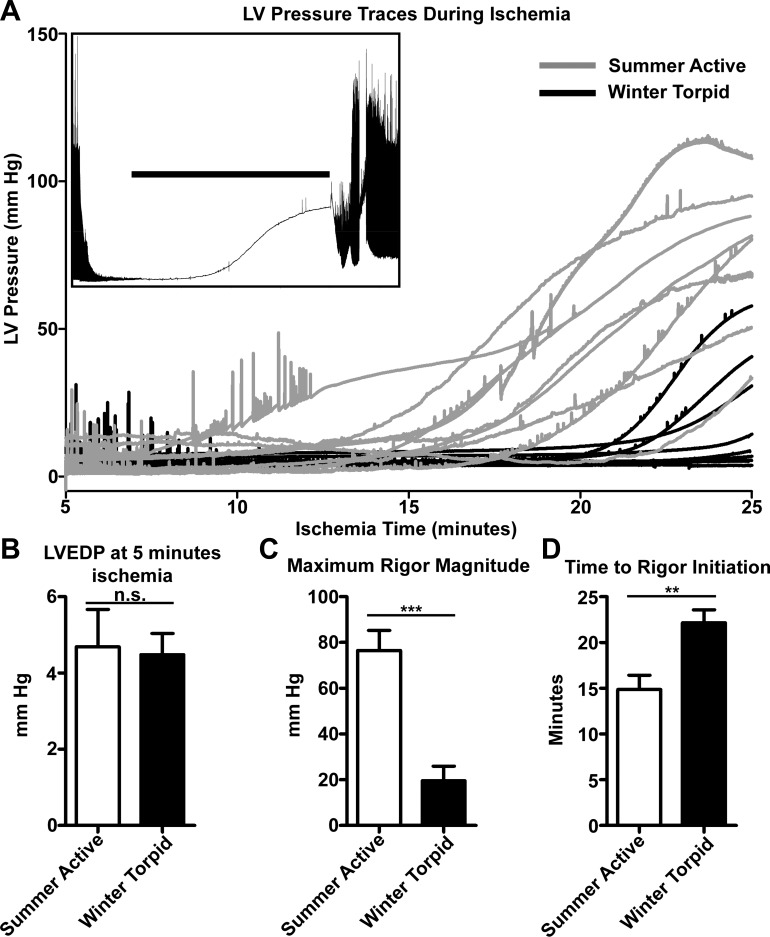Fig. 5.
Ischemia-reperfusion contractures were different between summer and winter hearts. A: individual LV pressure traces of every summer (n = 8) and winter (n = 9) heart that underwent ischemia-reperfusion injury. Inset: representative ischemia-reperfusion behavior of 1 summer heart showing preischemic baseline and postischemia reperfusion; horizontal bar indicates time during ischemia shown for all pressure traces in A. Summer hearts entered contracture sooner in ischemia than winter hearts and developed greater pressures. Two summer hearts from experimental phase 1 were excluded from ischemia-reperfusion analysis: one due to perfusion with pyruvate during ischemia-reperfusion and the other due to a 30-min ischemia time. B: ischemic LV pressures prior to onset of contracture were not different (P > 0.05) between summer and winter hearts. C: maximal pressure during ischemia was greater in summer than winter hearts. ***P < 0.0001 (by unpaired 2-tailed t-test). D: summer hearts entered contracture sooner than winter hearts. Entry to rigor contracture was set when a heart's LV pressure passed an 8-mmHg threshold. Of 9 winter hearts, only 5 met this criterion, and only 1 winter heart entered rigor prior to 20 min of ischemia; winter hearts that did not pass 8 mmHg LV pressure were entered as “25 min.” All summer hearts entered rigor, and only 1 did so after >20 min of ischemia. **P = 0.0034, summer vs. winter (by unpaired 2-tailed t-test).

